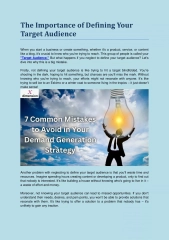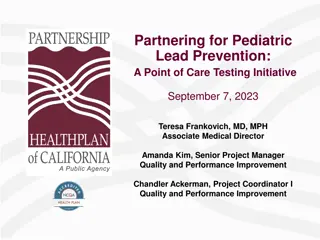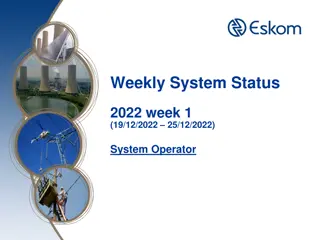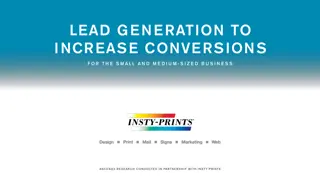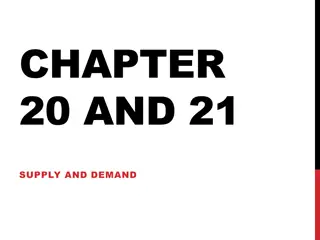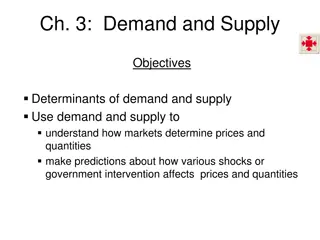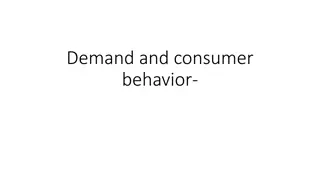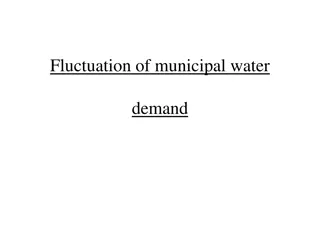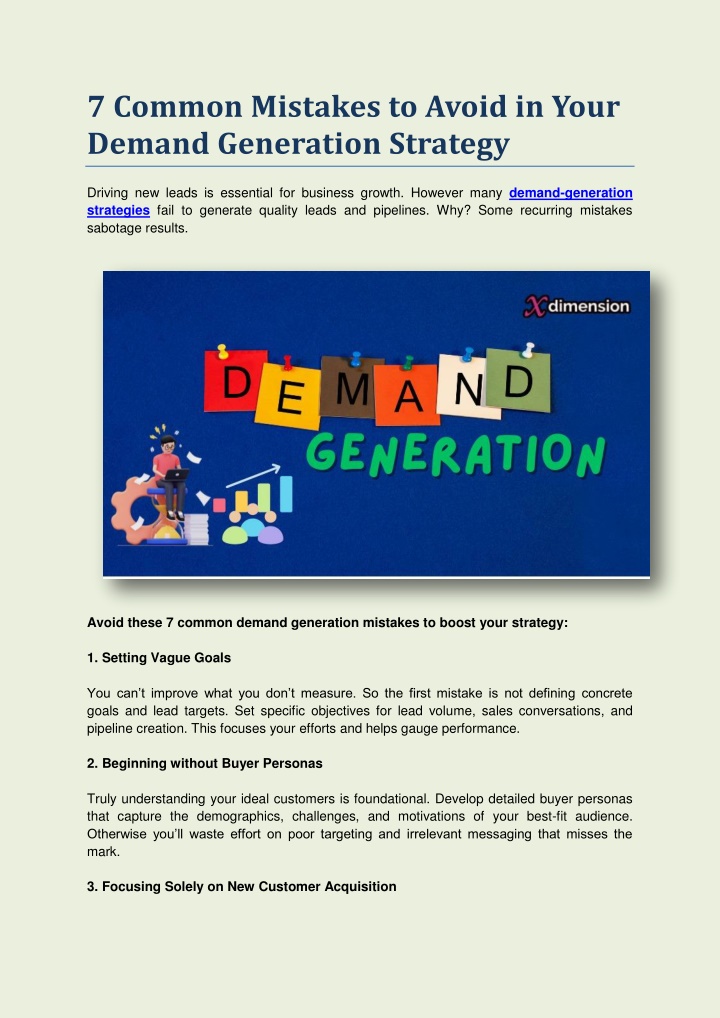
Lead Demand Generation Strategy
Driving a consistent pipeline requires an effective demand-generation strategy. However many teams unknowingly make missteps that hinder their efforts. Donu2019t let these common mistakes trip up your strategy
Uploaded on | 2 Views
Download Presentation

Please find below an Image/Link to download the presentation.
The content on the website is provided AS IS for your information and personal use only. It may not be sold, licensed, or shared on other websites without obtaining consent from the author. If you encounter any issues during the download, it is possible that the publisher has removed the file from their server.
You are allowed to download the files provided on this website for personal or commercial use, subject to the condition that they are used lawfully. All files are the property of their respective owners.
The content on the website is provided AS IS for your information and personal use only. It may not be sold, licensed, or shared on other websites without obtaining consent from the author.
E N D
Presentation Transcript
7 Common Mistakes to Avoid in Your Demand Generation Strategy Driving new leads is essential for business growth. However many demand-generation strategies fail to generate quality leads and pipelines. Why? Some recurring mistakes sabotage results. Avoid these 7 common demand generation mistakes to boost your strategy: 1. Setting Vague Goals You can t improve what you don t measure. So the first mistake is not defining concrete goals and lead targets. Set specific objectives for lead volume, sales conversations, and pipeline creation. This focuses your efforts and helps gauge performance. 2. Beginning without Buyer Personas Truly understanding your ideal customers is foundational. Develop detailed buyer personas that capture the demographics, challenges, and motivations of your best-fit audience. Otherwise you ll waste effort on poor targeting and irrelevant messaging that misses the mark. 3. Focusing Solely on New Customer Acquisition
With the urgency of new lead generation, its easy to neglect your current customer base. But marketing to existing customers is more efficient. Look for upsell and cross-sell opportunities within your accounts before chasing new leads. 4. Measuring Vanity Metrics like Clicks Clicks, impressions, and followers don t necessarily indicate lead demand generation strategy effectiveness. Prioritize conversion metrics that show how activities directly impact pipeline and revenue. Track form fills demo requests, free trials, and sales conversations. 5. Relying Too Much on Outbound Cold outreach like calls and emails has low response rates. Shift more spending to inbound tactics like SEO, social media, and content syndication. This attracts prospects already looking for solutions, generating more sales-ready leads. 6. Creating Low-Value Content Content is essential for lead generation. But generic, bland content won t captivate and convert visitors. Create targeted content that educates and solves problems for your personas. Share valuable insights instead of obvious sales pitches. 7. Not Leveraging Marketing Automation Automation tools help identify promising leads, nurture them with relevant content, and determine sales-readiness. This streamlines formerly manual tasks to make lead generation and qualification more effective at scale. What are the 4 steps of the demand planning process? 1. Demand Forecasting - This involves analyzing historical sales data and market trends to estimate future demand. Quantitative models and techniques like time series forecasting are commonly used to create data-driven demand forecasts. 2. Demand Collaboration - The demand forecast is shared across departments like sales, marketing, and operations. Key stakeholders review assumptions and provide qualitative insights to refine and validate the forecast. 3. Demand Consensus - With input from various teams, demand consensus is achieved on the final forecast. All parties align on the numbers and projected demand to inform executive-level planning. 4. Demand Review - As the period unfolds, actual demand is monitored relative to the forecast. Teams meet periodically to review variances, discuss drivers, and collaborate on improving forecasting accuracy. Insights are incorporated into future demand planning cycles.
Following these 4 core steps - forecasting, collaboration, consensus, and review - enables organizations to produce reliable demand forecasts. Alignment of on-demand plans allows various functions to execute strategies to meet projected customer requirements. What are the phases of the economy? The economy moves through four primary phases in the business cycle - expansion, peak, contraction, and trough. In expansion, economic activity accelerates. The peak is the climax of growth. Contraction, or recession, is a downturn in activity. The trough is the lowest point before the cycle begins recovery and enters expansion again. Managing through these oscillating periods is key for businesses. There you have it - 7 common pitfalls that hinder lead demand generation strategy and results. Avoid vague goals, poor targeting, neglecting customers, vanity metrics, outbound over-reliance, weak content, and lack of automation. Fix these issues and you ll see your lead generation and conversion improve dramatically. Focus on providing value, not making the sale. With smart planning and optimization, your demand-generation efforts will be delivered.

